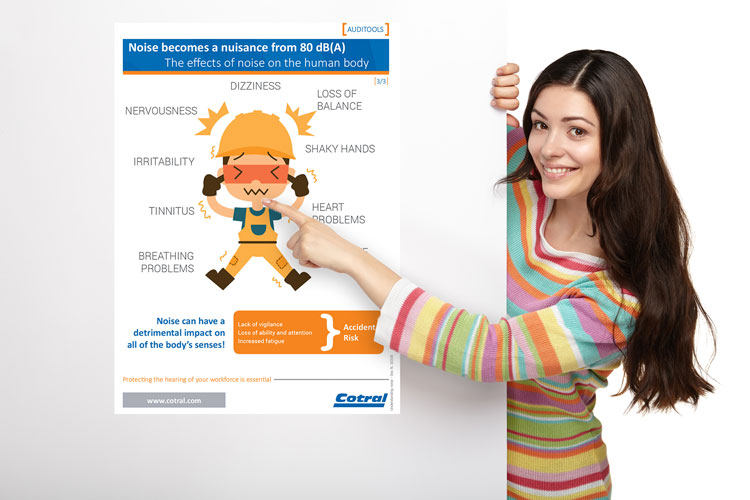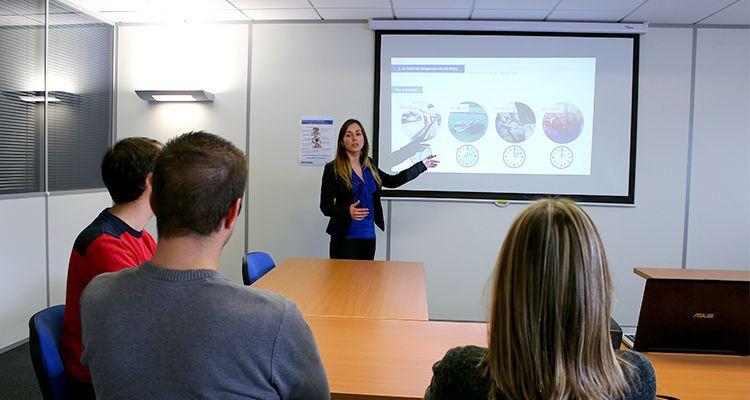Raise awareness about Occupational Noise-Induced Hearing Loss (ONIHL)
On average, hearing protection devices are only worn for about 38 percent of the time that a worker is exposed to excessive noise. A study from the Department of Environmental and Occupational Health Sciences clearly shows that raising awareness among employees and providing proper training can have a positive impact on their wear rate.
Educate your employees so that you can
- Reduce the risk of occupational noise induced hearing loss and deafness
- Comply with occupational health and safety regulations regarding training for at-risk employees
- Improve their hearing protection wear rate when they are exposed to noise
- Motivate your employees so that they have a positive attitude towards hearing preservation. Ensure that they understand what’s at stake, and how important it is to be protected

Raising awareness starts at the moment the ear molds are taken

The first key step in your hearing preservation campaign is when the ear impressions (molds) are taken. This is done on-site, by a hearing protection specialist, at a time convenient for you.
During this appointment, your employees gain information about:
- Noise and how the ears work
- The risks of being exposed to noise without adequate hearing protection
- Why they should wear their hearing protectors 100 percent of the time they are exposed to noise
- How the ear molds are taken
- The hearing protectors they will be provided with
Auditools: free awareness and training tools
Enjoy the benefit of free signs and awareness-raising tools:
- "About Noise" signs explain how the ears work and the impact of noise on the unprotected ear
- "Noise Scale" is a great reminder about how loud your specific industry can be, and which employees are most exposed at the plant
- Other downloadable signs remind your employees how important it is to be protected the entire time they are exposed to noise, during working time as well as in their leisure time

Australian/New Zealand Standard (AS/NZS 1269.3:2005) - Required Training Program
Employee Training and Education
The employer must institute a training program for all employees who need to wear hearing protection.
- Training must be provided regularly, and at least annually, for each employee in the hearing conservation program
- Training must be repeated at any time when equipment or circumstances change
The employer must ensure that training includes:
- How hearing works
- The harmful effects of noise
- The purpose, use, care and maintainance of hearing protectors
- The role of audiometric testing and an explanation of test procedures
- The social handicaps of noise-induced hearing loss
(Source: www.osha.gov)
Successfully implement your prevention campaign
You want to reduce noise related risks in your business, but how do you begin? What protection devices should you choose? How do you involve your employees? How do you facilitate the implementation of custom hearing protection solutions?
Start with these three easy steps:
- Setup your campaign timeframe
- Use multiple communication channels, so your campaign can have a better impact
- Repeat your messages frequently
Your questions about raising awareness among your employees
When you train your employees on noise-related risks, you make them responsible and conscious of the fact that they expose themselves every day to an invisible danger. They become responsible for their own hearing health and adopt proper behaviors: wearing their hearing protection devices constantly during exposure, not taking them off while communicating, and so on. If hearing protection devices are properly worn, the risk of occupational deafness is reduced.
A prevention campaign is a set of actions taken to train and inform your employees about "noise risks".
Simple suggestions that will ensure a successful noise-risk prevention campaign:
- Make your campaign a regular event
- Multiply the channels of communication for greater impact: videos, comics, games, posters, and so on
- Repeat the messages regularly
Occupational deafness is a perceptive deafness that is caused by exposure to noise in the workplace. It is characterized by a reduction in hearing acuity: the transmission of sound is correct, but its perception (analysis) is defective. It corresponds to the destruction of ciliated cells.
If the deafness is identified as an occupational disease, the organization is responsible.
In terms of safety and prevention, the employer has an obligation to achieve a result. If an employee is diagnosed as deaf due to his professional activity, but the employer provides him with equipment for prevention and protection, the law will take into account all of these elements.
